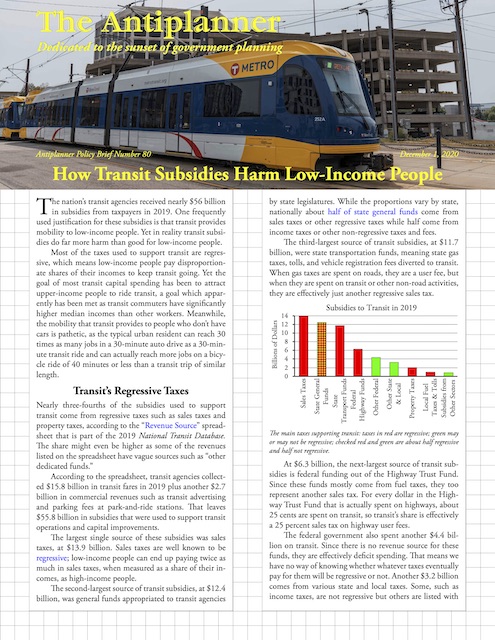Washington Metro says it will have to end weekend train service, close 19 rail stations, and reduce bus service by 45 percent if Congress doesn’t give the transit industry $32 billion (on top of normal federal funding of $13 billion) in 2021. In order to keep from making similar cuts, San Jose’s Valley Transportation Authority (VTA) says it will spend money that voters had approved for roads on transit instead. All over the country, transit agencies are preparing for doomsday, when they run out of the $25 billion that Congress gave them (in addition to the normal $13 billion) in 2020.
The New York Times editorial board thinks it has found the solution to problems like these: pork barrel. “Nothing greases the gears of government quite like pork,” it says. Specifically, the Times calls for a return to earmarks, which were banned in 2011 when a Tea Party-dominated Congress rebelled against wasteful spending.
During most of the twentieth century, Congress appropriated transportation dollars in general categories, such as airports, highways, and railroads, and gave them to state agencies to decide how best to spend them within broad guidelines. This was based on a philosophy of government that the local people understand their problems better than people sitting in offices in Washington DC. Continue reading








